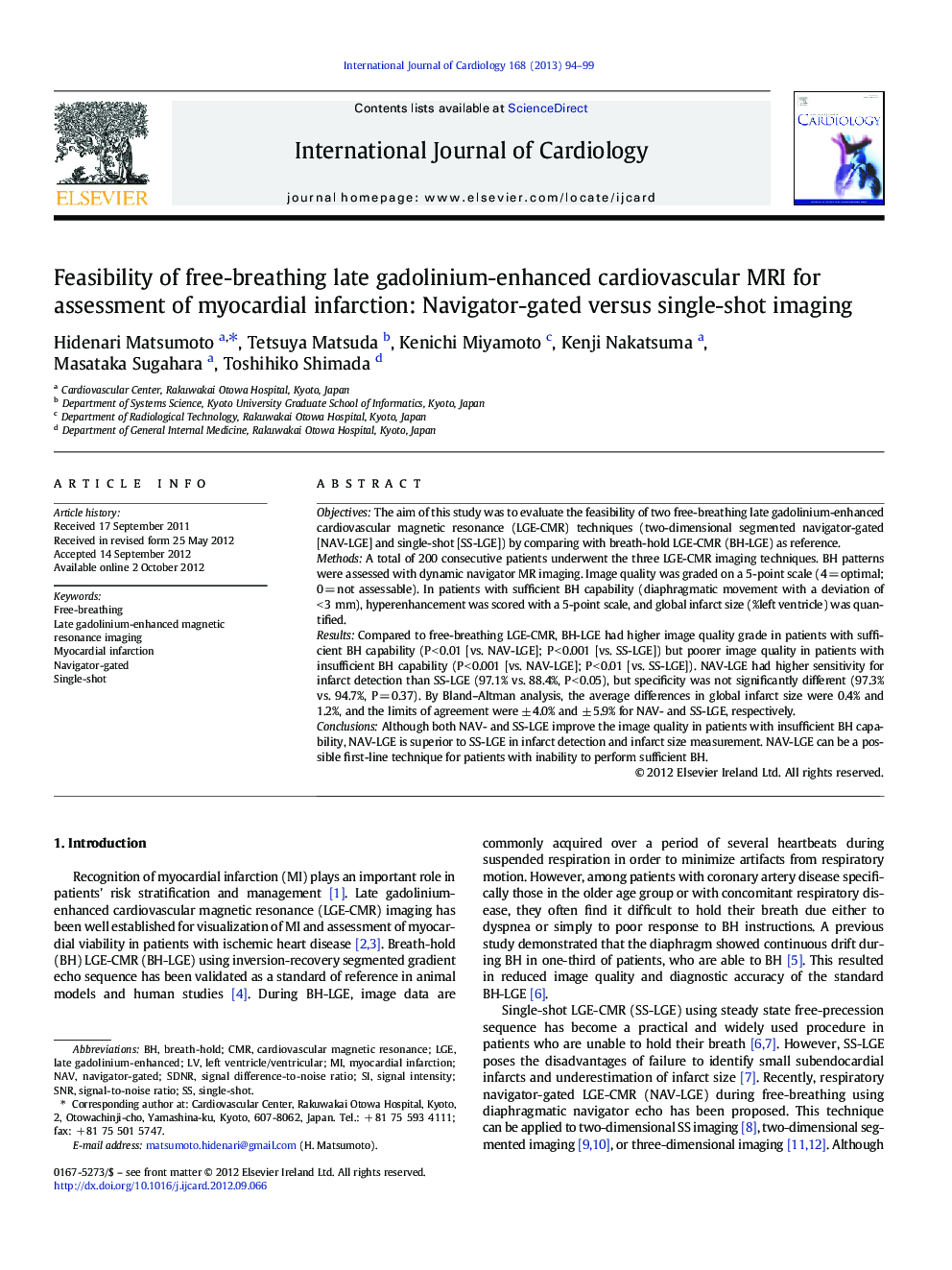| کد مقاله | کد نشریه | سال انتشار | مقاله انگلیسی | نسخه تمام متن |
|---|---|---|---|---|
| 5976550 | 1576211 | 2013 | 6 صفحه PDF | دانلود رایگان |

ObjectivesThe aim of this study was to evaluate the feasibility of two free-breathing late gadolinium-enhanced cardiovascular magnetic resonance (LGE-CMR) techniques (two-dimensional segmented navigator-gated [NAV-LGE] and single-shot [SS-LGE]) by comparing with breath-hold LGE-CMR (BH-LGE) as reference.MethodsA total of 200 consecutive patients underwent the three LGE-CMR imaging techniques. BH patterns were assessed with dynamic navigator MR imaging. Image quality was graded on a 5-point scale (4 = optimal; 0 = not assessable). In patients with sufficient BH capability (diaphragmatic movement with a deviation of < 3 mm), hyperenhancement was scored with a 5-point scale, and global infarct size (%left ventricle) was quantified.ResultsCompared to free-breathing LGE-CMR, BH-LGE had higher image quality grade in patients with sufficient BH capability (P < 0.01 [vs. NAV-LGE]; P < 0.001 [vs. SS-LGE]) but poorer image quality in patients with insufficient BH capability (P < 0.001 [vs. NAV-LGE]; P < 0.01 [vs. SS-LGE]). NAV-LGE had higher sensitivity for infarct detection than SS-LGE (97.1% vs. 88.4%, P < 0.05), but specificity was not significantly different (97.3% vs. 94.7%, P = 0.37). By Bland-Altman analysis, the average differences in global infarct size were 0.4% and 1.2%, and the limits of agreement were ± 4.0% and ± 5.9% for NAV- and SS-LGE, respectively.ConclusionsAlthough both NAV- and SS-LGE improve the image quality in patients with insufficient BH capability, NAV-LGE is superior to SS-LGE in infarct detection and infarct size measurement. NAV-LGE can be a possible first-line technique for patients with inability to perform sufficient BH.
Journal: International Journal of Cardiology - Volume 168, Issue 1, 20 September 2013, Pages 94-99